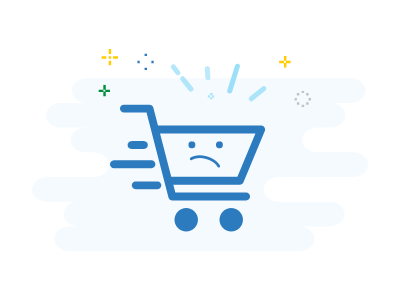Lean Six Sigma in Healthcare
Why apply Lean Six Sigma in Healthcare?
A thoughtful examination of Lean Six Sigma’s potential in service industries such as healthcare has demonstrated that in many respects, the concept of achieving defect-free processes is even more compelling in the healthcare profession than in the automated world of manufacturing from which Lean Six Sigma originated. LSS has been increasingly gaining acceptance in the healthcare industry, which faces many of the same issues and challenges e.g. long wait lists, hard-to-access care, overcrowded waiting rooms, staff shortages, high operating costs, low productivity, stressed-out employees, medical mistakes, etc.
In searching for effective and efficient healthcare solutions, there is more than just the needs of the patient to consider. Healthcare systems must also respond to the demands of physicians, nurses, support staff, healthcare administrators, the board of directors, and others. To complicate the situation, these different stakeholders often have conflicting objectives with respect to the operation of the healthcare organisation.
Healthcare is a difficult business that involves balancing high-quality medical care with financial performance. Outstanding advances in technology and treatment occur alongside inefficiency and errors. Healthcare services are under ever-increasing financial pressures. While an ageing population and expensive technological investments are important factors, operational inefficiency is a big contributor to costs.
LSS has been successful in tackling inefficiencies in direct care delivery, support services and financial administration in the healthcare sector. When implemented appropriately, continuous process improvement realises the benefits of operational efficiency, cost-effectiveness, high quality, and high patient satisfaction and staff engagement.
What are the key principles of Lean Six Sigma?
Lean Six Sigma is a customer-centric business improvement methodology and offers an aggressive identification and elimination of non-value added activities in a workflow process. These efforts typically eliminate defects, reduce cycle times, reduce travel distances, and eliminate reworks. Any changes are evaluated in terms of the value to the customer.
Healthcare is a service industry, and the ultimate customer is the patient, even if the services are paid for by an insurance company or the government. Hence, the focus is on improving clinical processes to identify and remove waste from patient pathways, enable staff to examine and improve their workplace, and improve quality, safety and efficiency.
How is Lean Six Sigma applied in Healthcare?
Patient care significantly involves a human element as compared to a machine element, in which the variability is subtle and very difficult to quantify. Therefore, the challenge in adopting a Lean Six Sigma approach to healthcare is to find a way to leverage the data from Lean Six Sigma to drive human behaviour. Success will come only when the Lean Six Sigma technical strategy is combined with a cultural strategy for change acceleration and a sound operational mechanism.
There are usually four metrics (indicators) that can be used singly or in combination, to define a healthcare organisation’s performance level. These metrics are:
- service level
- service cost
- customer satisfaction, and
- clinical excellence.
Whilst these metrics are applicable in healthcare organisations, they are also very difficult to measure quantitatively in a healthcare setting.
Despite the challenges in using Lean Six Sigma in the healthcare industry, many hospitals are beginning to use the Lean Six Sigma approach to improve patient satisfaction.
By understanding, meeting and exceeding patients’ needs and expectations, healthcare organisations can improve patient outcomes and, at the same time can, remain competitive by cutting costs and improving quality.
Lean Six Sigma is relatively new to the healthcare industry, so there are more opportunities that can be explored. Patients, or prospective patients, could be used as team members on Lean Six Sigma projects. An outside perspective can also be beneficial in determining what patients want and do not want. For example, some Lean Six Sigma projects may look into minimising the patient length of stay in the hospital after a certain procedure. Most patients want to go home as soon as possible; however, some patients might not be able to take care of themselves, or they may be too ill to risk leaving the hospital. This is where a patient representative on a Lean Six Sigma team could be beneficial.
Keeping patients satisfied is considered a top priority by many healthcare organisations. The traditional concept that people need healthcare and will continue to use the same healthcare providers out of necessity, even if they are not happy with the services they receive, has been changing rapidly. A patient can now access more information on healthcare providers and can make more informed choices about their treatment. Quality is now playing a more important role as patients have started choosing healthcare providers based on the quality of care and their level of satisfaction with the organisation, based on their previous experiences. At the same time, many hospital administrators have already started using the views and perceptions of their patients to organise their service and staffing, as well as using the feedback as a basis for continuous improvement in the overall organisation.
In addition to increasing patient satisfaction, Lean Six Sigma can be used in other areas of healthcare, such as reducing medication mistakes, diagnostic laboratory errors, and capability studies to improve various medical and surgical procedures. Here are some examples:
- Triage process in emergency rooms – Patients may be interviewed when they arrive at the emergency room to determine the extent of their illness and their priority to see a doctor. This process could be streamlined by the use of Lean Six Sigma so that critically ill patients can quickly see a doctor and not be delayed in the triage process.
- Patients spent time in the emergency room – Lean Six Sigma can also be used to decrease this time by getting patients admitted to hospital rooms or discharged more quickly. Patient rooms are more comfortable than the emergency room, and it is also very expensive for patients to stay in the emergency room. This could process could allow emergency rooms to treat more patients.
- Hospital laboratories – Laboratory turnaround times can be lengthy, and the workload could be sporadic rather than constant. Lean Six Sigma can be used to help manage these issues by optimising resources. Laboratory procedures can also be investigated to ensure that any unnecessary steps are minimised whilst still obtaining the desired results.
- Testing equipment – Lean Six Sigma can also be used to optimise the scheduling of time for the testing of equipment such as MRI machines, as well as the resources to operate this equipment. Also, scheduling can be done in such a way that patients most in need of the services can be given higher priority.
- Hospital facilities – The flow of patients should be considered for facility planning and the layout of operating rooms, laboratories, and waiting rooms. Some factors considered include convenient locations for the patients, their visitors and the doctors. The voice of a patient in the customer study may be beneficial so that the layout of patient rooms is comfortable and pleasing to patients whilst still remaining functional for doctors and nurses. The layout for Operating theatres may also be optimised for surgical procedures.
Thus, the Lean Six Sigma approach to quality and productivity improvement can be successfully used in the health care industry in similar ways that the approach is being used successfully in manufacturing industries.
How can CBIS help you?
Please contact us if you need more details on how our expert team can assist you. We are simply experts in the application of Lean Six Sigma in the healthcare sector.
Complete Lean Six Sigma Consulting and Coaching Services from Expert Coaches and consultants.
Attending our Public classroom physically or joining the team virtually from anywhere, according to the training calendar.
A flexible self-paced training for busy people along with our support by a dedicated coach, to solve the disadvantage of one-way online training
Delivering flexible and tailored training for your team and at your premises as a cost-effective solution for your team.







